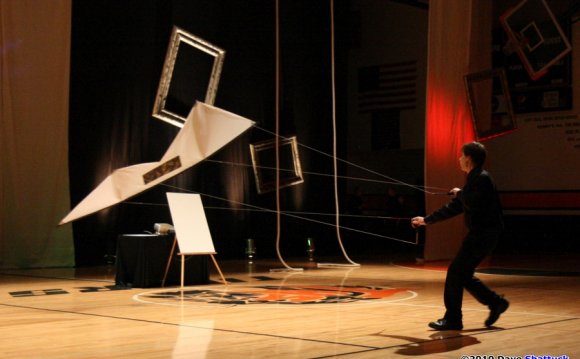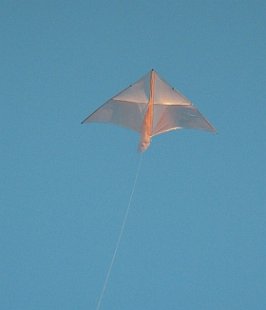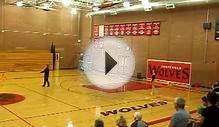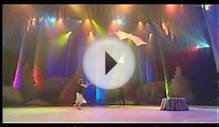
There are times you really need an indoor kite! You know the story... 'Was hoping to fly today, but just look at that wind - none of my kites will survive in that!' Or perhaps 'Gee, I can't even see a leaf moving out there - even my best kite won't stay up in that.'
 Delta almost too lightly built for outdoors
Delta almost too lightly built for outdoors
These days, help is at hand in the form of extremely light-weight kites that are specifically designed for flying indoors. Zero wind kites! From scattered and small beginnings, indoor flying has grown into something of a movement, with entire festivals now being dedicated to the activity. It might never compare in size to more conventional kiting, but flying indoors is definitely here to stay.
In my opinion, you are not restricted to buying special kites made from space-age materials such as polyester sail cloth and tapered graphite spars.
Instead, even the most humble of kite-making materials can be used, as long as the weights are chosen to allow very low-speed flying. Like the very lightly built dowel-and-plastic Delta over there in the photo.
In a large enough venue, most of my Dowel kites (over there on the right) would provide some reasonable zero-wind flying. Particularly if you went down a size with the dowel widths. The 2-Skewer kites would be more practical in smaller venues. Be sure to buy bamboo skewers that are only 2.5mm in diameter. Many packs have 3mm skewers, and these would make indoor flying harder, due to the considerable extra weight.
Bridling is particularly important for a home-built indoor kite. That's because a multi-leg arrangement allows you to get away with using much lighter spars than would otherwise be possible. But of course, it just boils down to personal choice. Are you a builder or a buyer? Both types come through this website ;-)
Broadly speaking, just 3 types of kites are flown indoors. Those that fly on 1, 2 or 4 lines. Miniatures, designs that have less sail area than the palm of your hand, are generally flown indoors for obvious reasons. So I guess these technically belong to the 'single-line indoor' category too. OK, so do those somewhat even more rare miniature 2-line stunt kites!
Check out Indoor Kite Flying on Amazon, for some great in-depth info on this topic. That's a Kindle version, but you can also buy the paper-back version.What's Indoor Kite Flying All About?
How can it be summed up? From what I've seen, which includes a number of You-Tube videos :-) it's a relatively short-line form of flying that demands a certain level of finesse. Fine judgment of line tension(s) and the kite's reaction to that at any given moment, is required.
The best fliers make it look easy, but of course it isn't. It's cool to some, corny to others, but I suspect that it's reasonably cool for most kite-fliers.
Fliers create their own 'relative wind' by slowly walking backwards, walking in large circles and occasionally pulling on the line(s). With practice, an indoor kite can be flown through all angles around the flier, including directly overhead. Even the single-liners!
YOU MIGHT ALSO LIKE










